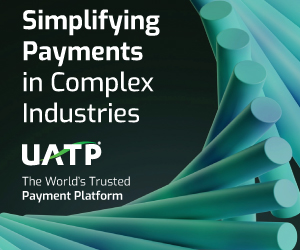The business travel landscape is undergoing a dramatic transformation as corporations and travel management companies navigate a rapidly changing ecosystem. This evolving relationship, reflected in the contracts that govern their partnerships, is being reshaped by innovations like New Distribution Capability, online booking tools, artificial intelligence and more.
The shift is sparking questions about how these services are contracted, and prompting a closer look at remuneration models based on changing financials and commercial considerations. The industry is at an inflection point, with advancements in technology leading to a steep learning curve for everyone involved, and opening up some areas where companies need to take extra care.
Gabe Rizzi, president of Altour, notes that RFPs and negotiations between TMCs and their corporate clients are becoming more strategic, tech-driven and outcome-based. “Companies expect TMCs to offer innovative AI-enabled products embedded in a highly automated solution work flows,” Rizzi says. “This is especially important for global servicing, where some of the largest global service providers have the networks but not the tech to stitch it all together.”
Rossana Martin, senior vice president, global sales for North America at BCD Travel, notes that in times of consolidation, there is always opportunity. “Is there some increased bid activity because of recent news and M&A activity in the TMC space? Sure, but we really haven’t seen a big change in terms of process and best practices,” she says. “In fact, we are seeing more of a commitment from prospects to engage in pre-RFP conversations and discovery earlier than before.”
Martin notes all customers and prospects are asking about content and NDC, but the reality is not all customers are ready to embrace modern retailing. “We’ve invested significantly in processes and platforms’ NDC content,” she says, “and are intent on working in partnership with clients and other players to extend its value at scale.”
Shopping for the Right Choice
When it comes to online booking tools, Martin explains that every program is different, and every client has its own OBT goals and expense policy. “Some want a full end-to-end offering which will drive the chosen OBT,” Martin says. “From a contracting perspective, some clients want a reseller deal, and some want to contract directly with the OBT.”
Depending on the size of the company, Jessica Roman, vice president of enterprise sales for Navan, says she’s seeing an increased number of enterprises who bypass the traditional RFP cycle altogether and opt for an RFI to evaluate the market and then pick a second vendor to do deeper scoping outside of their incumbent. “The reason for this? Many TMCs offer very similar services,” she states. “Regardless of the process, we’re seeing an increased appetite for the ‘right’ or ‘best’ OBT, leading to a larger portion of RFPs requiring the TMC to own the OBT as a hard requirement.”
She also sees a clear focus on inventory as the core pillar of a travel program. As a result, RFP teams need to understand how their future travel partner will provide the right inventory across all channels and their long-term strategy to remain competitive as new inventory sources come to market. “When negotiating, prospective companies look beyond the fees to better understand how solutions can help drive meaningful savings across the category,” Roman says.
Lora Ellis, head of consulting for Festive Road, strongly recommends corporate buyers develop:
• A clear future program strategy (purpose, vision, strategic priorities)
• Know the priority between customer (travelers, arrangers, stakeholders, collaborators) vs. cost vs. care (people, planet)
• Document detailed program requirements and processes
• Have a future program strategy, requirements and processes included within the RFP.
“Content and booking channels are top of mind within our client sourcing engagements and TMCs approach both of these in different ways,” Ellis says. “Understanding the TMC’s broader content and technology strategies will help buyers understand the implications in pricing.”
A thorough program assessment is essential for developing an effective RFP, according to Chloe Carver, corporate travel practice lead with Acquis Consulting Group. “It’s worth the time spent upfront because changing your TMC is a fundamental change to your program’s infrastructure,” Carver says. “Conducting an assessment not only helps create an RFP that addresses specific program needs, but it also reveals opportunities for complementary improvements that can be implemented alongside the TMC transition.”
One essential step is identifying key internal stakeholders who can provide feedback during the assessment. This often includes representatives from finance, HR, IT, procurement and shared services, as well as user groups like frequent travelers and executive assistants. “Understanding these different perspectives early on helps create an RFP that truly reflects organizational priorities and needs,” Carver says. “Engaging stakeholders from the start can also help generate valuable buy-in for the project.”
Tech Transitions
When transitioning from proprietary technology to more flexible, tech-driven solutions that may be favored by clients, challenges abound.
Yannis Karmis, senior vice president, product and development at BCD Travel, notes a “one size fits all” approach doesn’t work for all clients. “Each of our clients has special challenges and nuances that make them – and their travel programs – unique,” he explains. “We believe clients expect choices aligned to these unique needs.”
When considering an open system supporting multiple content sources, OBTs and third-party integrations, another challenge is ensuring it will work across the various solutions clients require in their programs. “Technology in our industry is highly interconnected and solving one part of the process is rarely adequate,” Karmis says. “It’s also important to ensure commercial models keep up with new technology solutions. Sometimes changing out one technology for something more modern can redefine the economics of a travel global travel program.”
Rizzi notes transitioning from proprietary technology to a more flexible, client-favored solution set presents its own issues in integration, cost, service consistency and data security for starters. “Ensuring easy interoperability with third-party platforms while maintaining service quality and compliance may require significant investment and operational acumen,” he says. “The key to getting your cake and eating it too is adopting a more hybrid approach, leveraging proprietary strengths while integrating API-driven solutions to meet evolving client demands.”
Pilot programs with new technologies or providers may introduce more flexibility and innovation but typically require careful program management to remain consistent with existing contractual commitments and client relationships.
Contracting Evolved
The rise of NDC and advanced OBTs has transformed TMC contracting by increasing expectations for expanded content access, easy integrations and tech-heavy service delivery end-to-end. Corporations who not too long ago shunned NDC now demand clear NDC strategies, omnichannel service models and customizable OBT configurations that integrate AI, sustainability tracking and real-time analytics. “This shift has led to more specific data-sharing agreements and revised SLAs to address NDC servicing challenges and OBT automation,” Rizzi says.
“As a result, TMC contracts have evolved from a simple booking agreement to a strategic, technology-driven framework.”
Roman notes both in-house OBTs and NDC connections have become hard requirements for evaluation cycles.
“Potential customers now want to go deep into a TMC’s NDC strategy, both to understand the potential savings and, most importantly, serviceability,” she says. For example, Roman notes that prospects want to better understand what percentage of content is actually booked via NDC (“Currently it’s one-third,” she says) and how support teams are staffed and equipped to support alternative sources of inventory.
Stating clearly what travel buyers expect from the TMC in terms of NDC support is key, potentially requiring airline-by-airline consideration as the market keeps changing, says Johnny Thorsen, vice president of strategic business development for Serko.
“The contract should include a clear definition of how both EDIFACT and NDC fares are captured for comparison and savings analysis to avoid confusion around overall buying performance,” Thorsen advises. “In terms of bundle benefits, the contract could include a detailed description of how these are compared as they might not appear in the initial fare comparison and therefore could be presented incorrectly in reporting.”
Navan’s servicing data on NDC from December is extremely compelling, with the vast majority of changes (91 percent) managed online for direct connect NDCs, significantly outpacing online changes of EDIFACT content. These numbers demonstrate that the system is not only working well, but working in ways travelers are really relying on.
To Fee or Not to Fee?
There are often concerns from clients regarding hidden costs, such as booking fees, that may arise during the contracting and negotiation process. That’s why it’s vital to talk about financial models during the discovery process and what areas drive TMC fees.
Carver notes it’s critical to review TMC contracts carefully so you know exactly what, when, and how you are being charged. “Most TMC pricing is done by transaction, which may seem straightforward, but there are always nuances,” she says. “Travel managers who understand both the proposed TMC contract and their travelers’ booking patterns are better positioned to negotiate a favorable contract, accurately forecast annual TMC costs, and avoid unexpected fees.”
Given the rapid pace of change in the travel industry, Thorsen recommends that buyers should look for a “flexibility clause” included in the contract which enables changes to content and pricing terms on short notice.
“This type of clause would allow buyers to take advantage of relevant developments immediately rather than at the traditional end of their contract,” Thorsen says. “Another thing for buyers to consider is to ensure they have the ‘unlimited right’ to repurpose and reuse booking data in any relevant third-party system at no incremental cost. This will help them avoid unexpected expenses associated with the implementation of new digital services on top of the core booking data.”
Martin points to discovery and early engagement where aspiring bidders can stress the importance of a level playing field, transparently laying out the scope of work with the expectation that all bidders have access to the same data and use the same assumptions.
“Another topic we cover is the multitude of hidden fees out there,” she says. “Let’s start with $0 fees. I always say you cannot afford ‘free.’ If a TMC is quoting you a $0 fee, you can be assured they are making up for that somewhere in their financials. They typically direct your travelers and arrangers to their preferred suppliers (vs., the corporation’s) to earn additional income.”
Thorsen notes innovative travel buyers are shifting the focus of their RFP process from the traditional “transaction and SLA cost model” to a “service and results model” where the focus is put on program efficiency. “In some instances, this would enable the buyer to pay a fixed monthly fee for a given amount of service, with KPIs determining whether the TMC gets a bonus or penalty based on actual performance,” he says.
There’s also the “one fee per trip” model, typically $20-$25 per trip and may include refunds, voids and after-hours calls. While this might be easier for a buyer to manage from a budgeting perspective, Martin notes such an approach could have a negative effect on total costs. “If a customer has high online adoption and high touchless bookings, this model will cost them much more in the long run,” she cautions. “I encourage all buyers to share their perceived total cost of ownership with each bidder. Often, we find that the buyer’s TCO is much higher than what ours really is.”
Demonstrating Value
During the RFP process, a TMC can demonstrate value with a host of metrics such as cost savings, cost avoidance, service performance, total cost of ownership, online booking adoption, SLA compliance, and more. “These metrics influence the final agreement by shaping pricing models, service-level commitments and performance-based incentives to ensure a data-driven, transparent and bespoke solution,” Rizzi notes.
“For travel managers interested in driving innovation, I suggest partnering with a TMC that has experience fostering relationships with new technologies,” Carver says. “These TMCs typically have established processes for evaluating new technologies, managing implementation risks and measuring results. They also tend to be more open to building flexibility into their contracts to enable you to experiment with new solutions as they emerge.”
However, it’s important to remember that innovation and pilot programs take effort from both sides. When negotiating contracts with innovation-focused TMCs, consider how costs, risks, and benefits of pilot programs will be shared. Clear agreement on these points helps ensure successful collaboration and sets realistic expectations for both parties.











